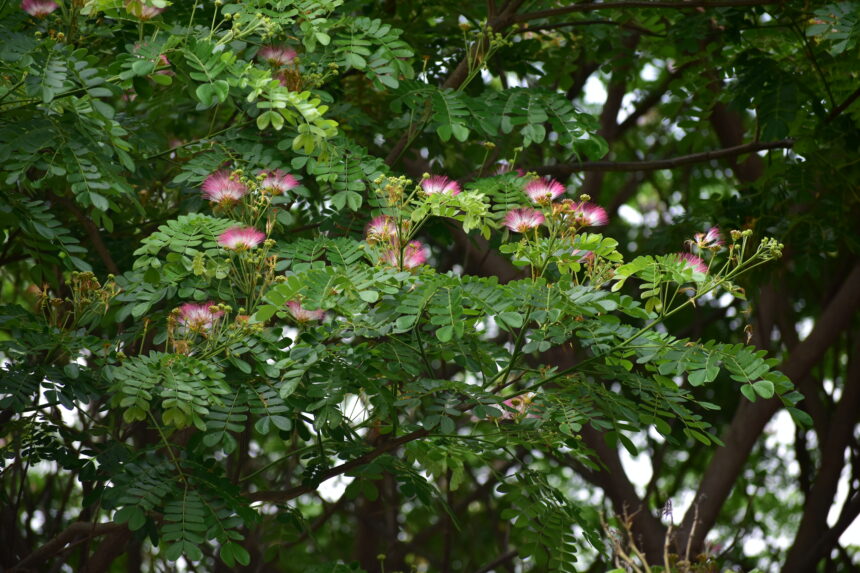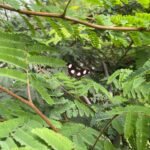Samanea saman, popularly called the rain tree, is an evergreen native to Central and South America, growing best in temperate conditions with moderate rainfall. With a height of 15 to 25 metres, the tree stands tall covered in an enormous dark-green umbrella like canopy. Its leaves fold downwards when it is raining, leading to the name “rain tree”. S. saman is a widely planted avenue tree, also common in coffee and cacao plantations, loved for its shade and blooms that attract bees. The fluffy pink flowers with light red stamens and white tips are a sight for sore eyes.

The brown pods they fruit have seeds surrounded by an edible pulp with a distinguished sweet flavour. Rain trees have a symbiotic relationship with bacteria in the soil and fix atmospheric nitrogen that helps other plant species that grow around it to thrive. The timber is tolerant to termites and rot, used to make plywood and build boats. The bark and leaves are known to treat conditions such as eczema, pruritus, diarrhoea, stomach ache and more.








